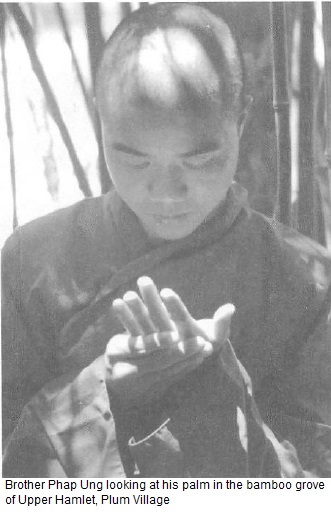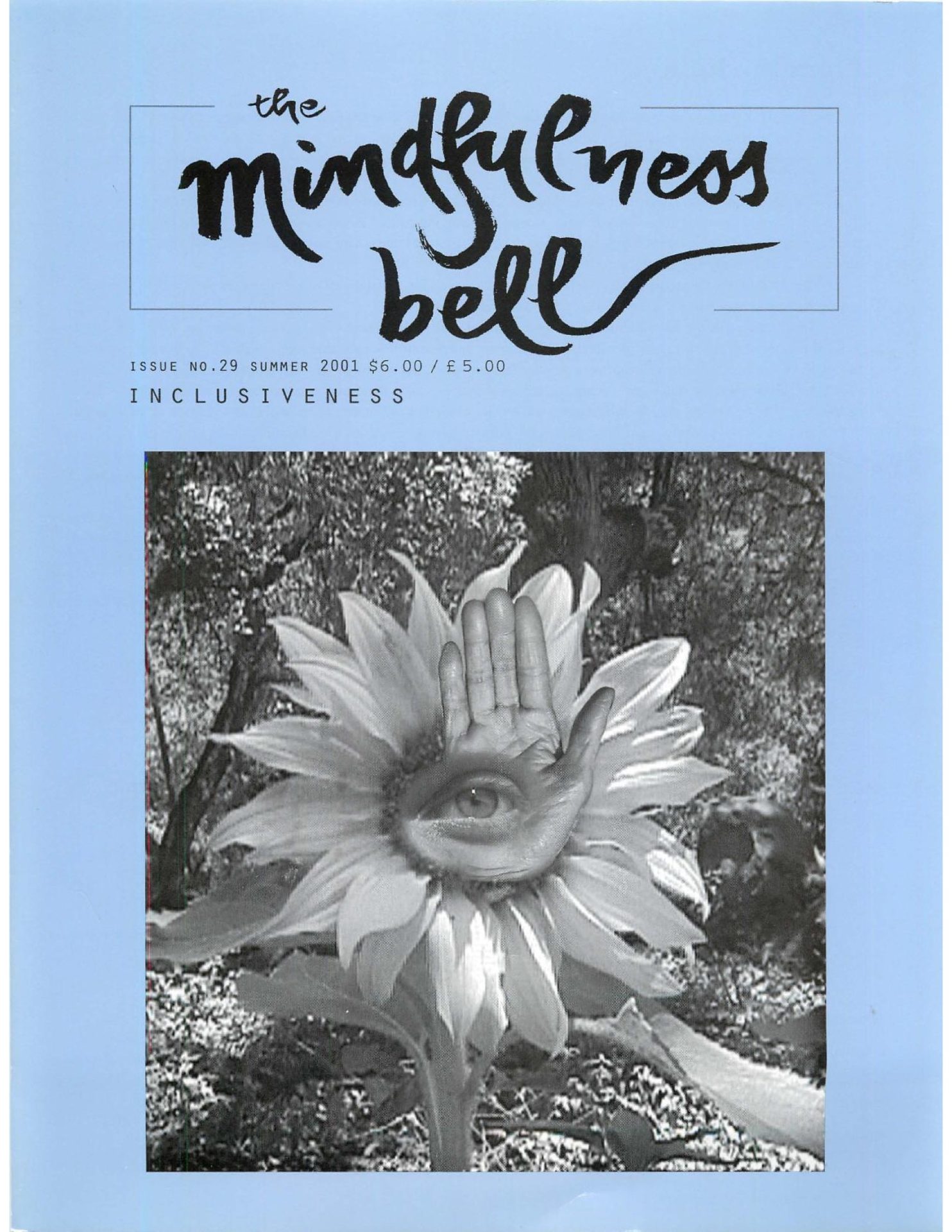By Duncan Liddle
The Fifth Remembrance:
My actions are my only true belongings. I cannot escape the consequences of my actions. My actions are the ground on which I stand.
In my bathroom, there is a rubber plant. It’s a very beautiful plant, and it means a lot to me because I grew it from a tiny cutting. It’s difficult to grow cuttings from a rubber plant.
By Duncan Liddle
The Fifth Remembrance:
My actions are my only true belongings. I cannot escape the consequences of my actions. My actions are the ground on which I stand.
In my bathroom, there is a rubber plant. It's a very beautiful plant, and it means a lot to me because I grew it from a tiny cutting. It's difficult to grow cuttings from a rubber plant. So this one is very special. One summer during a hot, dry spell, I neglected the rubber plant. I didn't give it enough water, and I didn't give it the kind of food it needed to stay healthy. And as a result, some of the leaves became damaged. Once the cells in a leaf are damaged (they are not like the cells in our body) they don't have the capacity to repair themselves.
When I saw the damaged leaves, I resolved to take better care of the rubber plant. I gave it a new pot with healthy soil, and gradually new leaves began to sprout. Even so, whenever I go to the bathroom, and I notice the rubber plant, I am reminded of my past actions. I sti II see damaged leaves.

It's not usual to think about our actions as our belongings. It's more usual to think about our car, or our house as our belongings - to think about household goods like a cooker or a television - or to think about personal items like a wristwatch. Belongings are almost always synonymous with material possessions. Each item makes a statement of who we are, so much so that when we collect them all together, we make them into an identity. We think these things are us, but they are not us at all. They can dissolve into nothing very easily. Actions and their consequences are much more defining.
In my father's later years I didn't see him very much. It was enough to exchange letters from time to time. On one occasion, I wrote to him to tell him he was important to me, he was valued, and that I loved him. Some time passed, and he wrote back saying how much it pleased him to read that his son loved him. In his letter, he also told me a story about my childhood . He described how he used to come at bedtime to tuck me in, and how he would give me a kiss on the forehead before I went to sleep.
One day, after I had been going to school for a while, I said to him something like: "Dad, I'm grown up now. Boys don 't do things like that. They don't have a kiss from their father." It was just a phase I was going through, feeling more independent. It didn't mean much. But it had an effect on him.
Most of my life, I remember my father as a little distant, emotionally. So when I read his letter, I was taken by surprise. It was a shock to discover the origin of the emotional distance between us had stemmed from something I had said as a child. Of course the words of a five-year-old boy should not be taken too seriously. But maybe my father was feeling just a little bit vulnerable that night when I spoke to him. And he was wounded by what I had said . My words caused him to step back. They created an emotional obstacle that he could not overcome. In Buddhist circles, we ca ll this kind of mental obstacle an internal formation. It's like a knot that is difficult to untie.
Two issues become c ear through this story. The first is that perceptions are often based on misunderstanding; they are wrong perceptions. And the second point is that our actions can affect many lives without our knowing. Fortunately, my father and I had an opportunity to speak about this - to untie the knot. But thirty years passed before we were able to discover and to release this internal formation. Thirty years is a long time for an obstacle to keep two people apart emotionally.
Many seeds of suffering are sewn through actions like these - through unmindful speech, acts of aggression, and through carelessness - not taking care of our actions. We can do things, we can say things that are hurtful to others without our realising. And others may not tell us. They may not reveal how upset they are. They just create an internal formation, and when they see us again, it brings up the same pain and irritation. Each new, reoccurrence adds to the previous wound.
After a while we forget the first incident; we forget the details. Then it becomes more difficult to resolve. We don't know where to begin to unravel the knot. Just to see or experience the same gesture or the same action, even in someone else, is enough to wake up our suffering and distress. For some reason we find we just don't like people who have raised shoulders, who use a certain tone of voice, who have facial hair, or display a particular quality. We just react to them from some deeply buried memory. When this happens, we say the response comes from our habit energy.
Habit energy is there, pushing us from behind. Someone says something and our reply is immediate, like a reflex. It is beyond our control. It is outside our conscious awareness. We can leave our car at home. We can remove our wristwatch. We can change our clothes and makeup. We can re-style our hair. We can make all kinds of external changes. But habits remain, because habit energy lives in the cells of our body.
Take, for instance, posture. Posture comes from your parents, from your grandparents, perhaps from many ancestors. If you see a three-year-old boy walking hand in hand with his father, you can see the transmission. To change your posture takes a lot of training. I have been learning to take mindful steps for more than a decade, and still I lose some steps each day.
It's the same with facial expres ions - we learn them from our parents. We acquire their gestures and mannerisms. We use the same phrases in our speech that we have heard from our parents. Habits like these are the driving force behind many of our actions. It's not that they are good or bad; some may be wholesome qualities, others less so. It's more that they are unconscious. And they are so normal, so naturalized, they have become invisible to us.
Mindfulness is the practice we use to make them visible again . Actions can become conscious actions once we rediscover them. Contemplating the Fifth Remembrance in our meditation practice: Breathing in: My actions are my only true belongings. Breathing out: I cannot escape the consequences of my actions.
We can begin to question: What are my true belongings? We can discover that what we really possess is not material wealth. Your true belongings, your closest companions can be found in the shape of your palm, in the softness of your eyes, in the rhythm of your breathing. All these elements reveal themselves in the quality of your actions.
Contemplating the Fifth Remembrance is the practice of transformation. It is enough to turn actions into conscious actions.
Duncan Liddle practices with White Clouds Sangha in Bristol, England.
Photo courtesy of Plum Village

